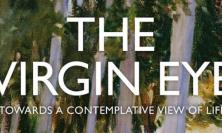When it comes to the Spiritual Exercises and spiritual direction, ‘we need to accept the sort of brain that we have got, and we need to work with it’, writes Roger Dawson SJ in the July 2020 issue of The Way. So what are the characteristics of the human brain that come into play when we talk about ‘movements’ in Ignatian spirituality?
In the Ignatian tradition, movements (motions or mociones) relate to the interior experiences of the soul. According to Michael Ivens, they ‘refer to interactions of feelings, thoughts and impulses of attraction and recoil which occur spontaneously in consciousness’.[1] These movements are involuntary and can come from the self, a ‘good spirit’ or a ‘bad spirit’ and freedom consists in the choice we have to accept or reject the direction in which they propel us. These movements or interior experiences can relate to the intellect (thoughts, reasoning, imaginings), the will (urges, impulses, desires) or affect (mood and emotions). Consolation and desolation as understood in the Spiritual Exercises are spiritual because they have God as their object and are felt reactions to God and God’s truth. Consolation is a positive reaction to God, while desolation is a negative reaction to God – pulling away or closing in on the self.
While movements do not solely refer to feelings and emotions, I would like to approach them here through two theories of emotion that come from recent psychological research. The first is Paul Gilbert’s evolutionary theory of three systems or ‘modes’ of affect regulation, and the second is Barbara Fredrickson’s ‘broaden and build’ theory of positive emotions. I believe that both these theories can help us to understand the foundations of the movements or motions that interest us in Ignatian spirituality generally and in discernment specifically. I am taking a strictly incarnational approach: in line with the tradition of Catholic anthropology I am treating the human person as a biological, psychological and spiritual unity, and am assuming that very little can be experienced or done without a body and a brain. As far as we can tell, it is only with this body and brain that we can experience interior movements.
Three Systems of Affect Regulation
The first theoretical approach I want to look at comes from research into the development of compassion-focused approaches in cognitive therapy. This takes an evolutionary perspective on the long development of the human brain.
The cognitively modern human brain emerged only about 200,000 years ago but is built on the much older parts that we share with our ancestors. The oldest and most primitive part of the brain is known as the ‘reptile brain’. This part is strictly territorial and is concerned with danger and the ‘fight or flight’ response; its main emotions are anxiety, anger and disgust. Once humans started to live in groups the limbic system developed, a more sophisticated part of the brain concerned with social functioning and belonging, and the emotions associated with kinship. Finally, the outer part of the brain, the cortex, developed and is associated with the higher functions of reasoning, planning and verbal skills.
There is a hierarchy here: it is hard for the cortical brain to override the powerful, primitive response of the reptile brain, largely associated with negative emotions, which may be unpleasant but are powerful signals that all is not well and have helped us to stay alive. Paul Gilbert has identified three ‘systems’ of affect regulation associated with this brain architecture.[2] The first is the ‘threat and self-protection’ system (threat mode) and this is related to the reptile brain. This system keeps us safe by scanning for danger and detecting threats quickly, and it triggers the main emotions (anxiety, anger, disgust). It is associated with physiological reactions (the ‘fight or flight’ response and, in extreme situations, inhibiting or freezing) and the urge to take self-protective action.
The second system is the ‘incentive- and resource-seeking’ system (drive mode). This functions to give us positive feelings that guide and motivate us to seek out resources that we, and those we love and care about, need to survive and prosper. At the basic level this includes food, water and sex, but it also includes needs for friendship, status, recognition and comfort. This ‘drive’ mode leads to high levels of arousal, and the experiences of excitement and pleasure. Desire and motivation are part of this system, but it can become overstimulated, leaving the person feeling frantic or over-excited. When a person is depressed, this system is underfunctioning and the person lacks drive and motivation.
The third system is the ‘soothing-contentment’ system (safe mode). This is related to safety and the emotions of calm, peacefulness and contentment. Because we are safe, there is no defending or attacking, and because we have got what we need, there is no striving. We are content because we are happy with the way things are. It is the experience of being on holiday—and often of those on retreat. This is usually associated with being connected with others and feeling secure, and is linked with affection and kindness. All these experiences are influenced by imagination.
The systems can operate on their own or in tandem with the others. The safe mode may operate alone when we are on holiday, but someone who is happy at work in a busy job will experience this and ‘drive’ mode operating healthily together. If a person feels unsafe at work and his or her job is at risk, or if that person is blocked or frustrated in achieving goals, then the threat system is activated with the drive system and the two operate together in an unpleasant and distressing way.
Threat mode belongs to the old brain, much of which is shared with other primates, and indeed other mammals and reptiles. But we have the more recently evolved ‘new brain’ as well, which is unique to humans. Our brain is about three times larger than a chimpanzee’s brain and this gives us the advantages of sophisticated higher cortical functions, such as thinking, imagining, planning, learning, reflecting and the ability to use symbols and language. This allows us to be creative – to imagine and bring into existence something that is not there in the present – and is the basis for agriculture, culture, arts and science. The capacity for imagination is also the basis for empathy (we can imagine what it might be like to be another person), and for hope and dreams – to envisage and plan for a better future. However, it also means that we can imagine feared or dreaded future situations, or go over difficult past situations and missed opportunities. So this capacity for imagination can lead to hope and creativity, but it also gives us the capacity to worry about what others might think of us, and can be the source of fear about the future and disappointment about the past.
These are some of the neuropsychological characteristics of the human brain. According to Gilbert, these systems are hard-wired into us, and we need all of them. All of these modes – threat mode, drive mode and safe mode – are available to us, and our responses take place within them. This is part of what it is to be human and has to be part of a Christian anthropology too. It is within these affect regulation systems that spiritual movements occur.
The Three Systems and Spiritual Direction
In relation to the Exercises and spiritual direction, we need to accept the sort of brain that we have got, and we need to work with it. It is an extraordinary part of God’s creation but it is, as Paul Gilbert says, a tricky brain, or even a crazy brain, which can present us with challenges and cause problems or difficulties.[3] This needs to be understood and accepted, and not spiritualised. In terms of the spiritual life, threat mode seems to cause most difficulties, whether this system is operating alone or in combination with drive mode. There may be good reasons why we are trying to protect ourselves (the threats and risks may be real), but it is hard to remain in consolation when this system is firing, and desolation is very likely. There is no peace in threat mode, and discernment is certainly very difficult. Perhaps it is for this reason that Jesus repeatedly says, ‘do not be afraid’ and ‘have no anxiety’.
Safe mode seems to be optimal, or even essential, for the spiritual life. In some instances, we can exist in this mode alone (such as when we are on retreat), but most of us have to do things, achieve things and get things in our daily lives, so living in consolation may well involve safe mode plus drive mode working happily together. For safe mode to operate, people need to feel safe – in spiritual direction, in the Church and with God. Maybe we need to know not that we are saved but, more, that we are safe.
The ‘Broaden and Build’ Theory of Emotions
Most psychological research has focused primarily on negative emotions but, according to Barbara Fredrickson, positive and negative emotions work in different ways.[4] The effect of negative emotions, such as anger and anxiety, is to narrow and constrict our attention and thoughts, and they prime us for specific behavioural responses so we can act quickly in a self-protective way. ‘Anger, for instance, creates the urge to attack, fear the urge to escape, disgust the urge to expel ….’[5] These responses have survival value as they get us out of life-or-death situations.
Fredrickson’s research suggests that positive emotions are different. Positive emotions broaden our attention and thinking in the moment, and open up the repertoire of behavioural responses. They lead to a wider range of thoughts and actions coming to mind. Possibilities and ideas emerge; we become more creative, make links and associations, and gain greater perspective. For example, the emotion of joy leads to play, exploration and the pushing of limits. Contentment and the feeling of safety it engenders lead to a desire to stop and savour and appreciate, and to integrate this experience into new understandings of ourselves and the world.
Positive emotions build enduring personal resources, which in turn offer the potential for personal growth and transformation by creating positive spirals of emotions, thoughts and actions. For example, joy can lead to social play, in turn leading to the formation of social bonds and attachments which become a source of social support. These gains are durable, in that they last longer than the emotional states that led to them. Positive emotions also facilitate ‘approach’ behaviour (attraction towards rewarding stimuli) and encourage us to continue the activity that produces the positive emotions, and they are therefore associated with engagement and persistence.[6]
So the experience of positive emotions, in stark contrast to that of negative emotions, broadens our repertoire of thoughts and actions, and builds enduring personal resources. Because this leads to increasing our social and intellectual capacities, it also leads to coping better and increases resilience. Positive emotions do not just signal well-being, but also produce optimal functioning. So, rather than being just pleasant states to enjoy, they promote transformation and growth, in that we become more creative and knowledgeable, and more socially integrated. There is evidence that positive emotions are associated with improved psychological and physical health. Fredrickson has amassed considerable experimental evidence to support this theory, and has found that the experience of positive emotions can even ‘undo’ or repair the after-effects of negative emotions.
So what are the positive emotions that matter? Based on her research Fredrickson has identified a ‘top ten’: joy, gratitude, serenity, interest, hope, accomplishment/satisfaction, amusement, inspiration, awe and love. Interestingly, love is unique in encompassing all the other nine emotions, and can be elicited by each of them. Love is therefore probably the most important and the most experienced positive emotion.
’Broaden and Build’ and Spiritual Direction
It will be clear that, because we hope that retreatants will grow and change during the Exercises and that there will be some personal transformation, if this theory is correct then positive emotions are important in the Exercises. Conversely, negative emotions risk defeating their purpose. Whereas the Exercises are a school of prayer, people do not learn well in the absence of positive emotions. Whereas the Exercises are a means of election and decision-making, negative emotions constrict and limit our options and even ideas, rather than opening up new horizons of hope.
This gives us a way of understanding how imagination functions. Positive emotion leads to the broadening and opening up of ideas, to making connections and seeing possibilities. It leads to a cognitive expansiveness – a greater perspective and wider array of thoughts and ideas for action come to mind. Joy and hope, for example, allow for this opening up in a way that is not possible when negative emotions prevail.
Implications
In conclusion I want to make some general comments on what I see as the implications of theories of the emotions for the giving of the Spiritual Exercises. I am conscious that in focusing particularly on affect and the emotions I have neglected the other two elements in interior movements, namely the intellect and the will. Of course, not all consolation is associated with positive emotions, as in ‘painful consolation’, for example. The role of thoughts and the appraisal of events or situations are crucial to the experience of emotion and, according to cognitive theory, actually give rise to emotions.
I do not want to depreciate negative emotions. As Gilbert reminds us, our brains did not evolve for happiness but for survival and reproduction. The brain gives priority, and more resources, to dealing with threats and danger than to pleasurable things. Negative emotions are a part of the normal range of human emotions and they will often override positive emotions. Positive emotions arise when we are safe and seldom occur in life-threatening situations. We do not experience positive emotions and get their benefits when we are overcome with negative emotions. This means that desolation may come more easily than consolation – and we need to feel safe. In the Exercises this means that the director has to provide safety, in other words to model the safe relationship with God.
Imagination is crucial in Ignatian spirituality and in the Exercises. Our capacity for imagination means that we can recreate our pasts and imagine situations that have not yet happened. This is the basis of both hope and empathy, but also of remembering our troubles and traumas as well as generating anxieties about the future. Our imagination can put us into threat mode, as well as putting us in touch with our dreams and hopes, or what God wants for us. It is worth remembering that imagination can be used by both the good spirit and the bad spirit.
Finally, ‘broaden and build’ theory underscores how positive emotions are essential for optimal functioning in terms of psychological health; it may well be that they are also essential elements of our spiritual health. Most of the ‘top ten’ emotions will be familiar to any Ignatian director as signs of consolation – joy, gratitude, hope, inspiration, awe and love. It should be no surprise that two of the classic signs of consolation – hope and love – are here. Faith, with the trust that comes from feeling safe, seems to complete the triad of theological graces that constitute the hallmarks of consolation.
Positive emotions are worth cultivating in our own lives and in the lives of others, not just for the momentary positive, pleasant experience or for psychological benefits but because they seem to be spiritually important too. We expect someone to grow and change in the Exercises, and positive emotions seem to be important for that growth and change, for being transformed to become better people living better lives and to become the people God created us to be.
Roger Dawson SJ is director of St Beuno’s Jesuit Spirituality Centre in north Wales.
This article is based on a lecture offered at the International Symposium on Psychology and Spiritual Exercises (Loyola, 20–24 June 2019), and a Spanish translation will appear in the Acta of the Symposium in 2021. It was published in The Way, 59/3 (July 2020).
To find out more about and subscribe to The Way, please visit theway.org.uk.
[1] Michael Ivens, Understanding the Spiritual Exercises (Leominster: Gracewing, 2004), p.210.
[2] Paul Gilbert, The Compassionate Mind (London: Constable, 2009); and see Paul Gilbert, Compassion-Focused Therapy (Hove: Routledge, 2010).
[3] See for example Gilbert, Compassionate Mind, p.35; Paul Gilbert, Living Like Crazy (York: Annwyn House, 2019).
[4] See Barbara Fredrickson, ‘What Good Are Positive Emotions?’ Review of General Psychology, 2 (1998), 300–319; Barbara Fredrickson, ‘The Role of Positive Emotions in Positive Psychology: The Broaden-and-Build Theory of Positive Emotions’, American Psychologist, 56/3 (2001), 218–226; Michael A. Cohn and Barbara Fredrickson, ‘Positive Emotions’, in The Oxford Handbook of Positive Psychology, edited by Shane J. Lopez and C. R. Snyder (Oxford: OUP, 2009), chapter 3.
[5] Fredrickson, ‘What Good Are Positive Emotions?’, 302.
[6] On ‘approach’ behaviour, see Rachel M. Korn and Andrew J. Elliot, ‘Avoidance and Approach Motivation: A Brief History’, in International Encyclopedia of the Social and Behavioral Sciences, 2nd edn (Amsterdam: Elsevier, 2015), 326–331.






